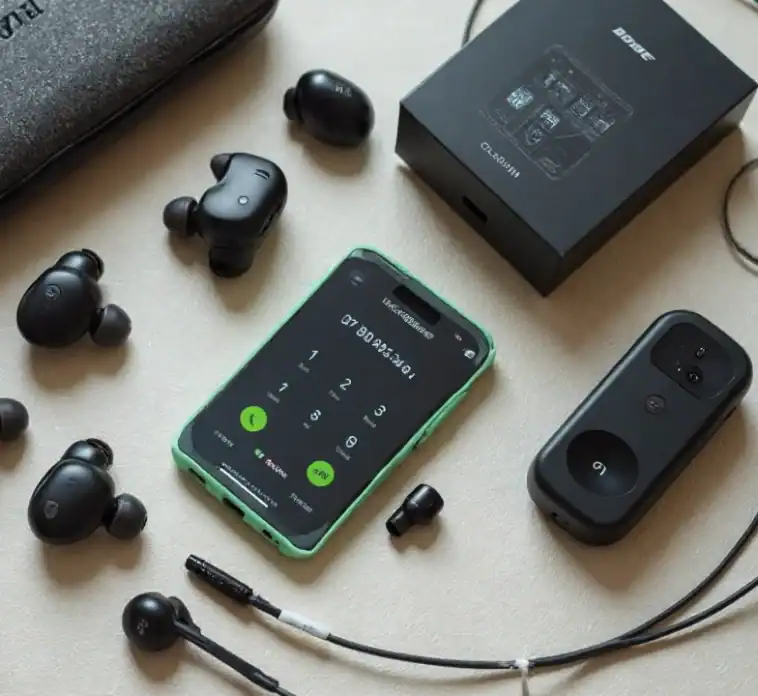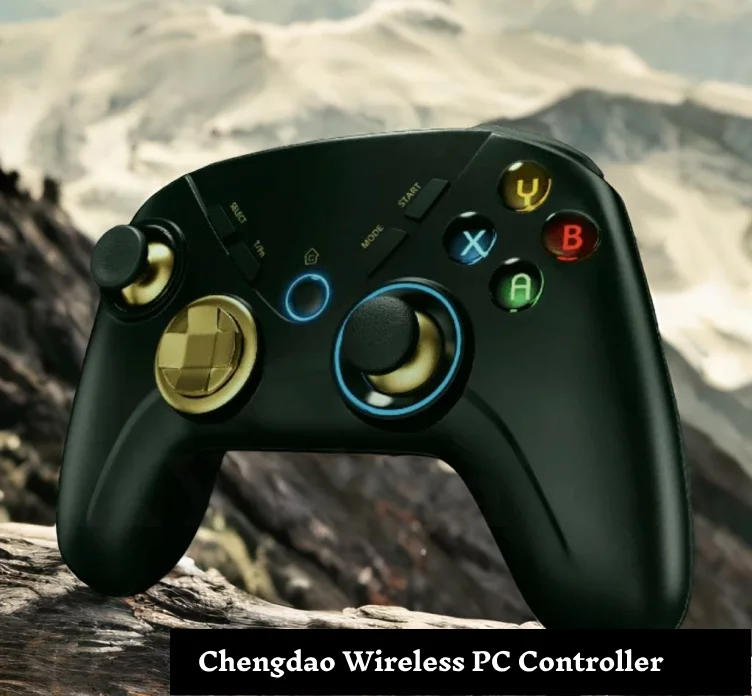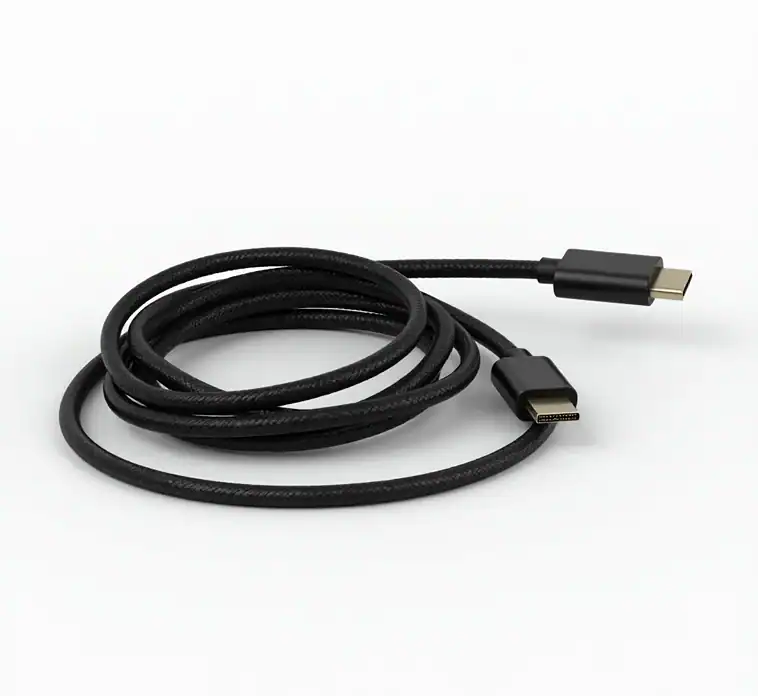Over the past several years, infrared drones, or thermal drones, have become increasingly popular. In many fields, they have become necessary tools. Send me those, and I’ll get your incredible machine flying in tough conditions. They navigate along the tops of tall rooftops and large industrial properties with minimal effort76. Their main function is to identify hot and cold spots. They gather accurate temperature information while protecting human pilots on the ground.
Have you been considering purchasing a drone with a thermal camera for your business? Or maybe you’re a drone pilot looking to enhance your abilities. This guide is for you. First of all, let’s talk about what thermal imaging drones are. We’ll examine the ways various industries use them. And we’ll also go through the most common and greatest thermal drone devices on the market now.
Let’s dive right in!
9 of the Best Infrared and Thermal Drones
Below is a closer look at some of the best infrared and thermal drones. We’ve researched dozens of applications to help you narrow down which one is right for you.

JOUAV CW-30E + MG-120E – Best for Surveillance and Security
The JOUAV CW-30E is a top-of-the-line thermal drone designed for high-security surveillance. By default, it is equipped with the MG-120E gimbal camera. For unmatched smoothness, a 640×512 resolution infrared camera mounted on a 3-axis gimbal is combined with this 30x zoom optical camera. It comes with AI recognition and tracking, too. The resulting performance is excellent in both image quality and tracking accuracy. It supports dual real-time with extremely low latency. This allows you to enjoy smooth and efficient data when you demand it.
This is a fixed-wing, VTOL (Vertical Take-Off and Landing) drone. This means that the plane can take off and land straight up and down in tight spaces like cities. It is fantastic to use. It offers an 8-hour flight duration, maximum speed comparable to a high-speed train at 90 km/h, and an impressive flight range of 200 km. This makes it well-suited for wide-range surveillance. This is the top infrared/thermal camera drone in terms of size and operations.
The CW-30E is also equipped with sophisticated flight control systems enabling autonomous avoidance of obstacles. It’s all-weather capable, so it can fly in any weather. Its cloud software, Jocloud, allows you to easily control all of your drone fleet and send/collect flight data.

Pros
- High image quality and accurate tracking.
- Live dual real-time streaming with minimal latency.
- Amazing 8-hour range with a 200km range.
- VTOL architecture is ideal for small spaces.
- Available as a fuel gas or HFO version.
- Everything you need for the most realistic virtual flight experience imaginable.
- Cloud-based design for simple management et coopération.
Cons
- More expensive than other commercial drones.
- It is quite large and can be difficult to move around.
JOUAV CW-15 + MG-120E – Best IR Drone for Firefighting
The JOUAV CW-15 + MG-120E makes an excellent firefighting drone. Its power comes from the identical MG-120E gimbal camera. This payload provides a 30x optical zoom camera and an ultrahigh-definition UAV thermal camera. Critical details are sketched on a 3-axis gimbal combined with AI thermal tracking. This IR drone is simple to take off from cliffs, forests, and mountains, showing its strong power.

By all accounts, this VTOL drone is best in class. It has an autonomy of up to 180 minutes and flies at a cruising speed of 61 km/h, allowing it to cover large areas during firefighting. With its flight range of 50km, this takes it to fires in the middle of nowhere. It’s also extremely tough and can fly in winds up to 13.8m/second.
The JOUAV CW-15 is the best way to stay aware of what’s going on around you. It even has options for multi-screen monitoring in order to view more than one place at the same time. Its artificial intelligence system can accurately detect smoke and fire, issuing warning messages early. It’s also end-to-end encrypted for private conversations.
Pros
- Integrated optical and infrared sensors gimbal of top quality.
- It can operate within confined spaces thanks to its VTOL capability.
- Extended flight time and range for extended operations.
- Open architecture for your company’s custom development.
- Secure data encryption safeguards private data.
- AI-powered automatic fire and smoke detection.
- Great for those who are looking for good obstacle avoidance for a safe flight.
Cons
- It is very expensive due to its advanced features.
- It takes some practice to learn how to use all of its features.
DJI Matrice 300 RTK + Zenmuse H20T – Top Thermal Drone for Agriculture
The DJI Matrice 300 RTK with Zenmuse H20T is an excellent thermal drone for today’s cutting-edge agriculture practices. The H20T is a multi-sensor camera. It comes with an ultra-wide-angle camera, a 20MP zoom camera, a 640×512 px thermal sensor, and a laser rangefinder. Farmers can get accurate information from the way these sensors are set up. They can also hone in on problems due to pests, disease, faulty watering, and more. The thermal drone imagery it generates is crisp and actionable.
This drone is able to cover large farms with a 55-minute flight time and 15km transmission distance. It can support up to 2.7kg. That means you can add other tools or sensors if necessary. The DJI Matrice 300 RTK also comes with AI for performing regular inspection missions.

Pros
- Multidimensional camera for complete data acquisition.
- Long distance and flight time.
- Automatically Inspected By AI For Consistency.
- Highly efficient avoidance system.
- Great for precision ag uses.
Cons
- Needs to swap out its big batteries often.
- High learning curve for new commercial drone operators.
- There may be heavy rain, which may affect the playing conditions.
- Sometimes, restricted areas remain locked through geofencing.
“6. DJI Matrice 210 RTK + Zenmuse XT2 – For Solar Panel Inspection”
The DJI Matrice 210 RTK with a Zenmuse XT2 is an excellent thermal camera drone for solar panel inspections. The camera of Zenmuse XT2 is equipped with a thermal sensor from FLIR Tau 2. It shoots 12MP photos and 4K video. It can read temperatures with an accuracy of 0.1 degrees Celsius and is sensitive to changes in temperature of less than 50 mK. The level of detail is important for locating bad cells or connections.
The drone has a top speed of 81 km/h and a flight time of 38 minutes. Its 8km distance is ideal for the inspection of large solar farms. Embedded RTK unit delivers centimeter-level positioning accuracy. This guarantees accurate hovering and repeatable inspections.
Safety is also a priority. The drone is also equipped with a powerful FlightAutonomy system and anti-collision beacon for easy long-distance, low light flight. Its IP43 rating ensures protection against dust and water.

Pros
- Good, detailed quality of thermal images with the high-end Zenmuse XT2 camera.
- Gives extremely precise temperature readings.
- It flies fast and long distances.
- RTK system for precision up to centimeters.
- AES-256 data encryption and device Authentication.
- Highly developed obstacle detection system.
- Dust- and water-resistant to IP43.
Cons
- (Works with the only one paired remote)
- Max payload capacity is not as high as some competitors.
- The internal GPS can be occasionally obstructed with your camera.
Autel EVO II Dual 640T V2 – Best Thermal Drone for Hunting
The best hunting thermal drone is the Autel EVO II Dual 640T V2. Includes a 8K camera and a 640×512 thermal imager, made by the US for professionals. It has a picture-in-picture mode that puts the thermal image on top of the regular camera image. This provides you teriffic context. With a refresh rate of 30 Hz and 16x zoom, this heat-hunting drone is quick to find prey from a safe distance.
They perform well in the air as well. It has 360-degree obstacle avoidance for flight safety in complex environments, such as forests. It provides up to 38 minutes of flight time and can withstand windy conditions. Object tracking and more complicated flight plans have been available for a little while as well and make for a really good hunting experience.
This thermal drone camera records the heat emitted by animals, so it’s ideal for both day and night use. The EVO II Dual 640T has 10 different color palettes (heatmaps) to make certain you get the best image for your scene.
Pros
- Amazing 8K camera, and thermal sensor with a resolution of 640×512.
- The ability to play in picture-in-picture mode for improved awareness of the environment.
- 16x magnification to easily spot your quarry.
- Long 38-minute flight time.
- Great wind resistance for smooth flight.
- Safety all round with 360 degree obstacle avoidance.
- Features object tracking and flight planning.
Cons
- The thermal camera indicates temperature differences, but not specific numbers.
- It doesn’t have any of the fancy extras, such as live spot metering or temperature alerts.
Yuneec H520E + E10T – Best for Search and Rescue
The Yuneec H520E with the E10T camera is a high-end thermal UAV for search and rescue agencies. The thermal camera in E10T is developed based on a FLIR thermal camera, featuring high resolution and thermal sensitivity. This two-camera system even allows you to simultaneously stream thermal and visible feeds back to the remote control. The images can be overlaid or shown in picture-in-picture mode for the operators.
The H520E is dependable for long, extended operation time — up to 28 minutes—thanks to its flight time. Its 6-rotor (hexacopter) design makes it more stable and reliable. It also contains enhanced safety features including ActiveTrack (sensing and tracking) and gesture mode.
The H520E is the industry standard for utility companies, police or fire brigades, and rescue teams. It can also have a payload delivery system fitted to airdrop vital items in remote places.
Pros
- Stable gimbalGroundbreaking low-light RGB camera.
- The double video stream simultaneously shows thermal and visual images.
- Extended mission times thanks to long flight times.
- With hexa-rotor design, it have more stable and safe flight.
- Comes with critical safeties such as fail-safe battery modes.
Cons
- The obstacle avoidance system isn’t quite at the same level as some competitors.
- Some have experienced the odd dropout.
- Rated payload cap is 2.5Kg.
JOUAV PH-7E + PDL-1K DUAL – Best for Industrial Inspection
The JOUAV PH-7E+PDL-1K DUAL is a high-performance thermal drone for very challenging industrial inspections. It is equipped with the PDL-1K dual-gimbal camera. This payload has a stunning 1280×1024 resolution IR sensor and a 1″ visible light sensor. This makes the drone with an IR camera suitable for work to be done during the day or night with thermal and visual images.
This infrared camera can be used for a variety of applications, including measuring temperature, 10 colour palettes, 8x digital zoom, picture-in-picture display, and much more. The visible light camera has a 16x digital zoom and can take photos up to 8K and video up to 4K. The complete system forms a three-axis gimbal with an accuracy of ≤0.01°.
The PH-7E was designed with practicality in mind—with a 63-minute flight time, an optimal speed of up to 23 m/s, and a control range of around 15km. It relies on millimetre-wave radars as well as a visual system to sense and avoid obstacles, such as thin cables.
Pros
- Dual extremely high resolution PDL-1K camera.
- Two Output modes for day and night for inspections.
- Infrared and visible light cameras with many features.
- Great 63-minute battery life.
- Excellent top speed and 15km control distance.
- Cables can be detected by advanced obstacle avoidance.
Cons
- Pricey compared with other thermal drones.
DJI Mavic 2 Enterprise Dual – Best for Building & Roof Inspection
The DJI Mavic 2 Enterprise Dual is a multipurpose drone capable of infrared imaging for building and roof inspections. It comes with a dual camera configuration. This includes a thermal FLIR® camera and a 4K HDR camera. The 32x digital zoom drone is able to capture detailed inspections from a secure distance.
Stability is a key feature. The cameras, stabilised by a three-axis gimbal, remain steady, even when at a 90-degree tilt. It’s incredibly useful when working from the underside or from multiple angles on something overhead.
It has a flight range of 4km and a flight time lasting up to 26 minutes. This would enable you to sweep over large areas in one flight.
Pros
- Dual sensors: infrared and 4K.
- FLIR thermal sensor MSX Image Enhancement Detail is enhanced.
- Great for Smoke/ Fog use or Night time.
- Self-heating batteries deliver up to 31 minutes of flight time.
- Timestamping, providing the exact time to localize the data.
- With fully omnidirectional obstacle avoidance for safe operation.
Cons
- Pricier than other options.
- Can be overpowered for smaller jobs.
- Other features could be difficult to learn.
Parrot Anafi Thermal – Best Value and Budget Inspection Drone
If you’re in the market for an affordable thermal imaging camera drone, the Parrot ANAFI Thermal is a great option. And it was the first of its kind to boast a 32x zoom. This way, you can examine things from afar.
And for a fraction of the price of higher-end models, it has two cameras — a thermal FLIR® camera and a 4K HDR camera with a 21MP Sony sensor. Both are mounted on a 3-axis gimbal capable of tilting +/ 90°. This will enable you to see through the bottom of buildings.
The Parrot ANAFI Thermal’s transmission range is 4 kilometres, and its flight time reaches 26 minutes. It’s also lightweight, collapsible, and can be used in temperatures from 10°C to 40°C.
Pros
- First industry 32x optical zoom.
- Two cameras, for both thermal and high-resolution visual.
- Stabilised gimbal in 3 axes with a 180° tilt.
- Great signal range and flight time.
- Fast and easy to manoeuvre.
- Portable and foldable, easy to carry and convenient to store.
Cons
- Image quality may suffer at full zoom.
- Does not have intelligent obstacle avoidance.
- Introducing this infrared thermal camera, the resolution is lower than premium models.
- The Return-to-Home (RTH) is not so accurate.
What is a Thermal Drone, and how does it work?
Thermal Drone A thermal drone, also called an infrared drone, is a UAV vehicle that includes a specialized thermal radar. This camera is for heat seeking. It then constructs a graphical representation of temperature deltas in a space. This technology is extremely valuable for search and rescue, surveillance, and industrial inspection.
So, how does it work?
- Radiation: All objects (above absolute zero) emit infrared radiation (heat). The drone’s thermal camera has a special lens that concentrates this radiation.
- The Detector: The collimated (focused) radiation strikes an array of detectors. This array is composed of tiny detectors called microbolometers.
- Generating a Signal: Each microbolometer measures the temperature of the radiation it detects. It creates a small electric signal as it does so.
- Constructing the Image: In the camera, a computer receives the signals from all the microbolometers. It translates these signals into a visual image, or thermogram. Colours and shades in the image correspond to temperatures. Hot areas appear in bright colours like red and yellow, while cool areas appear in dark colours like blue and purple.
Vs. Night Vision vs. Thermal Imaging
Thermal imaging is commonly confused with night vision. They are two very different technologies.
- Night Vision: Night vision cameras require a small amount of light to function. They collect this ambient light (from moon or stars) and amplify it thousands of times. Just like our eyes, they see reflected light. Their primary limitation is that they do not work very well in darkness, and they provide relatively low-contrast images.
- Thermal Imaging: Background image, A UAV thermal imaging camera does not require any light. It doesn’t “see” reflected light, it sees “hot” (in the infrared). This enables it to produce high-contrast images even at night with total darkness or through smoke and fog. This makes drone thermal vision much more useful in many cases.
What is a thermal drone?
As the capabilities of thermal drones for sale continue to improve and the technology gets ever cheaper, new applications are emerging in all sorts of different industries. Here are some of the primary uses for a drone with a heat camera:
- Solar Farm Inspections: Thermal drones can scan a solar farm and find damaged panels rapidly. A damaged or poorly performing panel shows up as a different temperature compared to the surrounding panels.
- Powerline Inspections: Drones can inspect powerlines for hotspots with no risk. A hotspot can signal a failing piece of equipment, possibly preventing a power outage before it occurs.
- Wildlife Hunting & Monitoring: A thermal camera drone can find and pursue game by detecting their heat signature. This is helpful for wildlife management, but also helpful for hunters who are trying to locate game in the bush/forest and dense vegetation at night.
- Aerial Roof and Building Inspections: Drones can detect heat loss, moisture penetration, and structural deficiencies of buildings. This is a fact and will make your heating and cooling units run more efficiently and prevent costly repairs.
- Smart Farming: Drone aerial data and analysis monitor crop health and soil management. It can also detect plant parts in need of more water or fertiliser, which can produce higher crop yields.
- Refinery and Pipeline Inspection: Rapidly inspecting the sections of large refineries and pipelines for leaks or hotspots allows refineries to stay safe and reduce downtime.
- Search and Rescue: Search and rescue teams rely on thermal drones to locate lost individuals. The heat of a person’s body even stands out clearly in the darkest of forests by night or in the most pitch black of disaster zones.
- Safety and Security: Police and security forces use drones to hunt down fugitives, control crowds, and even aid in firefighting, protecting personnel’s safety.
Questions and answers (Q A )
- Review Comments on Reddit: The best infrared camera is on a US-made drone



















